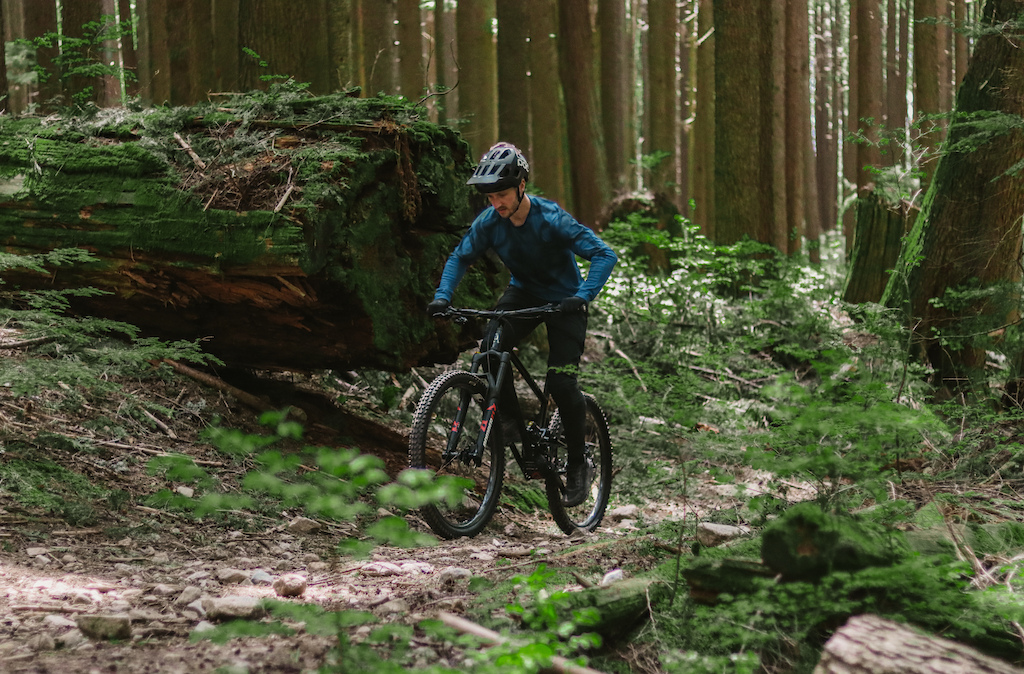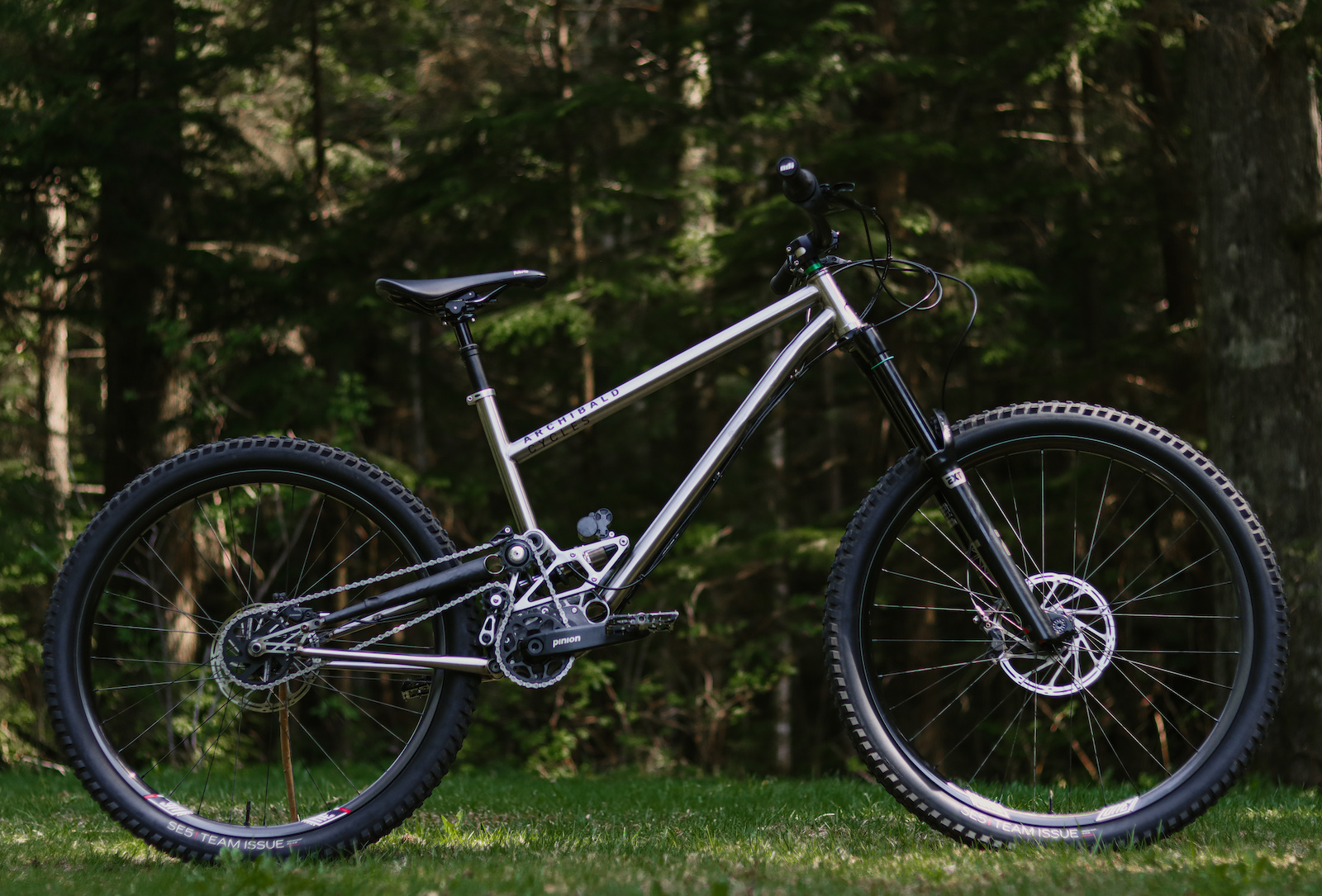The idea for the bike started as Alex’s capstone engineering project and evolved into a brand after he discovered it was possible to manufacture the frames for a competitive price locally.
The AC1 is a stout bike with 172mm of rear wheel travel, a 63-degree head tube angle, and a mixed-wheeled setup. Effigear takes care of the 10-speed gearbox, which uses a SRAM trigger shifter and standard chain.
As it stands, the medium size bike with a more budget-friendly build weighs 17.6 kg (38.8 lb) and is projected to cost $7,500 CAD. The AC1 will be available in autumn of 2023 through their website but aims to sell to dealers by the end of the year.
• Reynold 853 double butted steel frame
• 172mm travel / 170mm fork
• 29″ or mixed wheels
• Effigear Mimic gearbox
• 62.1° head tube angle
• 79º seat tube angle
• Chainstay: 435mm (454 at sag)
• Weight: 17.6 kg / 38.8 lb (490 size frame)
• Sizes (reach): 445, 460, 475, 490, 505mm
• Price: $7,500 – $11,500 CAD
• Frame kit: $5,750 CAD w/ gearbox and shock
• archibaldcycles.com
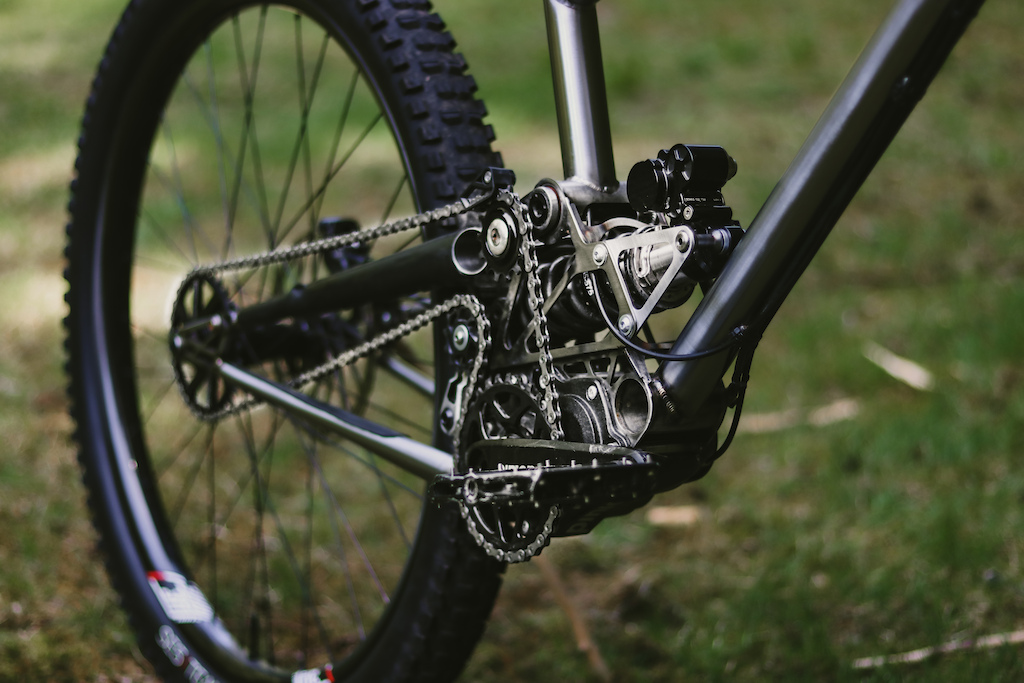
Frame Details
The AC1’s Reynolds 853 Double zone butted tubing reminds me of a simple stick drawing of a bicycle, although there’s a lot of machinery at work down low on the frame. In the belly of this beast lie two components that are dedicated to the design, a linkage-driven coil shock and gearbox. All in, the 490 size frame weighs 4.5kg (10 lb) without the shock and comes with a lifetime warranty.
The multi-link, high pivot suspension design uses a steel rear triangle and Enduro bearings in all but the dropout pivot, which houses a bushing. Ironically, Alex was working on his design while Trinity MTB was building their similar frame. Archibald’s frame is not as adaptable to various drivetrains, like the Trinity, but uses far fewer bolts. The rear triangle only has clearance for a 27.5” rear wheel and does not house any geometry adjustments.
For the hardware that is used, there’s a mix of steel and aluminum. 6mm hardware is used across these moving points, barring the main pivot which is 8mm.
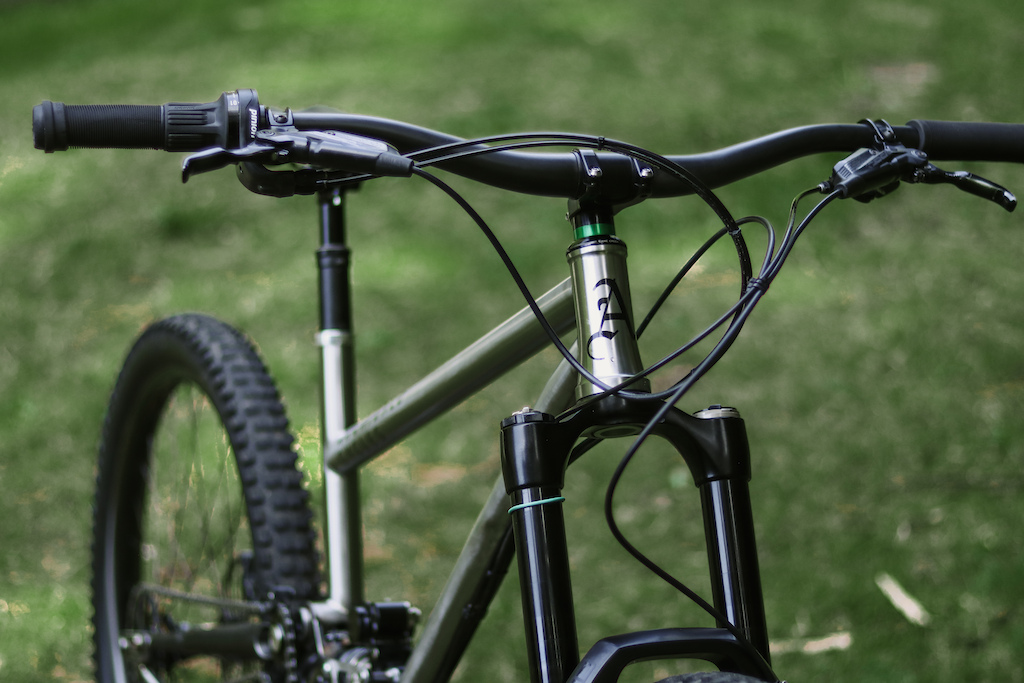
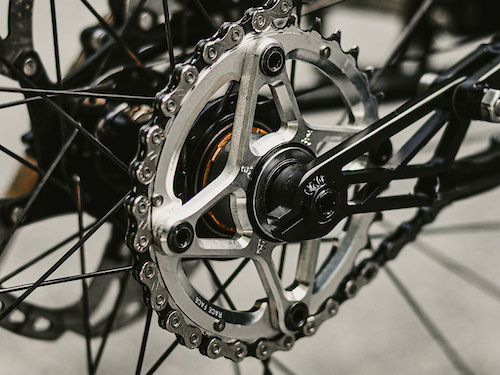
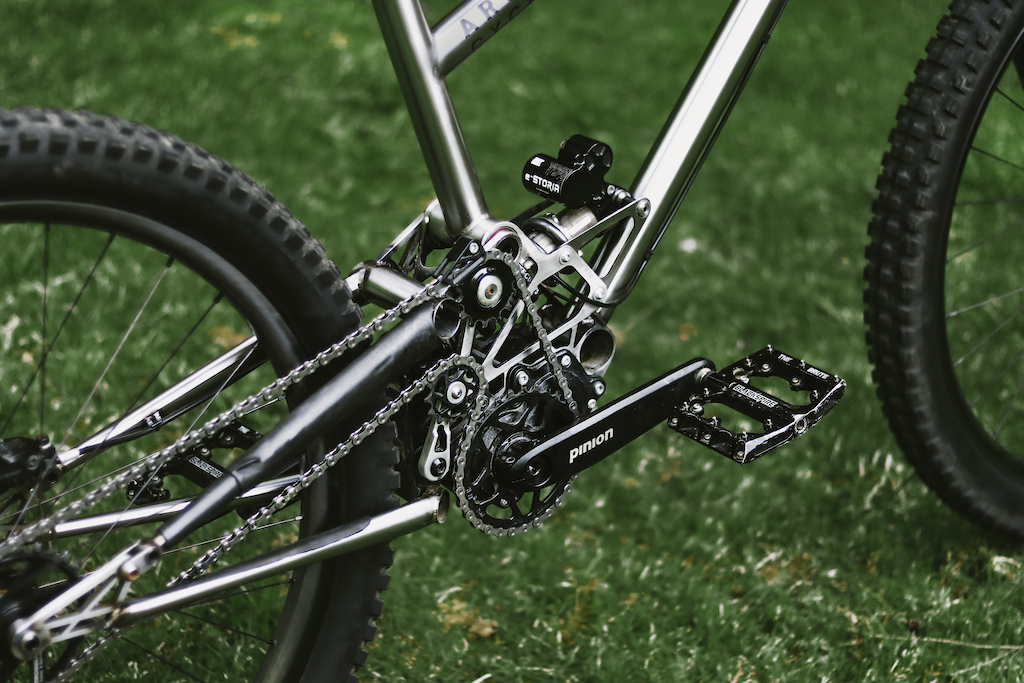
Gearboxes are a highly debated component choice and for legitimate reasons. They’re a slightly heavier and less efficient system than a traditional derailleur drivetrain system, but they offer serious benefits too. For starters, they are less susceptible to impacts. Effigear even backs their products with a 5-year warranty.
There’s also the argument for less maintenance since they run in an oil bath, plus, you have the ability to shift without pedalling. In fact, you need to let off the gas to shift, like a manual transmission vehicle. That requires re-programming your brain since you need to pedal for a derailleur to shift gears.
Effigear’s Mimic 469% range gearbox incorporates a SRAM 9-speed trigger shifter which is much more familiar than a twist grip shifter. In order to accommodate the release of an upshift on a trigger shifter, Effigear uses a spring-loaded housing that is attached to the downtube.
The Mimic gearbox runs on a standard chainring bolted to a custom carrier on the freehub and includes the chain tensioner. A 142mm wide dropouts give a narrower overall width for heel clearance while the single speed hub offers equally wide spoke bracing angles as a 148 Boost hub.

Suspension Details
The AC1 falls into the high pivot suspension category but employs a multi-link design, commonly referred to as an inverted 4-bar, where the chainstay is effectively floating between the rear axle and rocker link. This method allows frame designers to further separate the braking and pedalling forces by choosing their optimized idler position. In this case, Archibald has placed the idler behind and lower than the main pivot for a totally rearward axle path.
The CNC’d aluminum rocker link wraps around the gearbox to produce 172mm of vertical rear wheel travel and 32mm rearward. A 230x65mm length shock gives a linear-progressive 39% leverage rate which necessitates the use of a coil shock. The amount of progression increases towards the end of the travel.
Due to the gearbox drivetrain choice, only a single cog on the freehub is needed. This keeps the anti-squat steady throughout the entirety of the travel, not accounting for rider weight distribution. Given that high, consistent number and geometry, Alex didn’t say exactly what that anti-squat number was but doesn’t see the need for lockout.
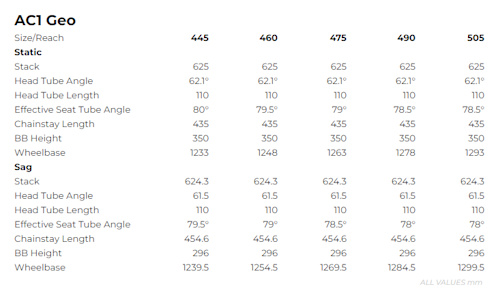
Geometry
If you’re going to build a steel, high pivot enduro bike with a gearbox, you may as well play to its strength, descending. The AC1 has a 63-degree headtube and short, 435mm chainstays (at sag).
That doesn’t mean the rider will be bent out of shape for climbing though. A steep 79-degree seat tube angle and consistent anti-squat are said to keep the center of mass well stabilized in the middle of the bike.
As far as sizing goes, there will be five frame sizes whose nomenclature is a reflection of the reach. The smallest frame starts at a reach of 445, growing in 15mm increments up to 505mm and all use the same chainstay length.
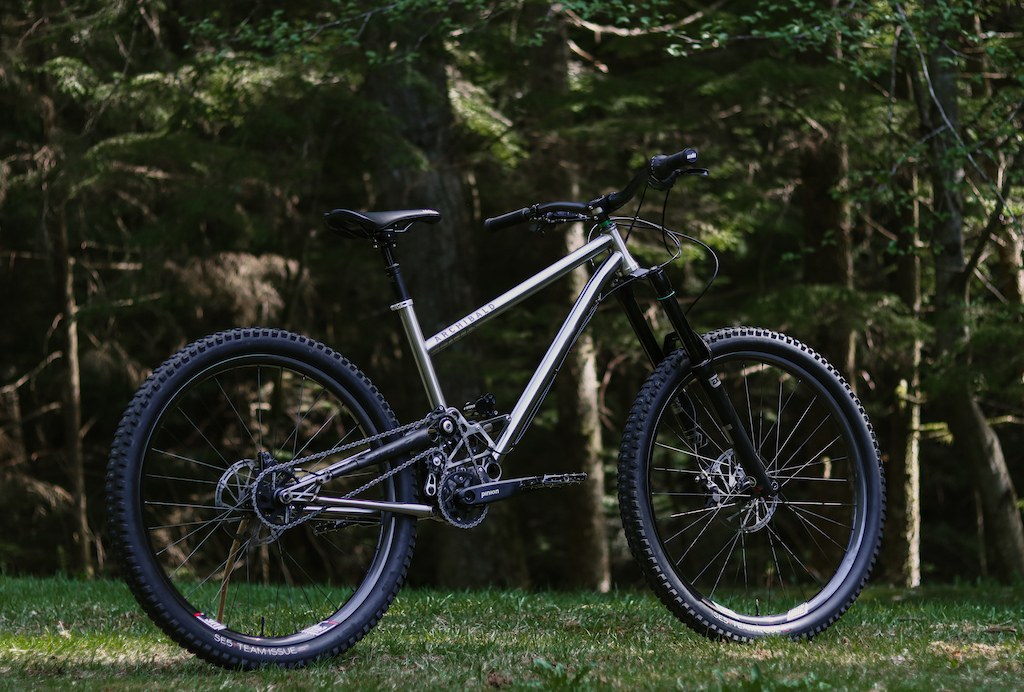
Pricing and Specs
Archibald’s steel frames will be welded and built into complete bikes right in Delta, BC. Two color choices, matte black or a clear, treated finish are available for the frame kit or full build.
Three build kits will stretch between a $7,500 CAD price tag to the “Maxed Out” $11,500 CAD component list. Each kit uses a OneUp Dropper V2 seat post, Blackspire Brute flat pedals, and the faultless Maxxis Assegai/DHR II tire combo
The “Budget-Friendly” kit comes with a Marzocchi Z1 and Bomber Coil shock, Blackspire bar/stem combo, and SRAM Code R brakes.
The Mid-Range build jumps up to We Are One Composites Union carbon rims, a RockShox ZEB Ulitmate fork and Super Deluxe Coil shock.
On the higher-end, the Maxed Out kit is laced with an EXT Era 170mm fork and E-Storia coil shock, We Are One Composite’s Da Package (bar/stem) and Union rims, this time with Industry Nine Hydra hubs. Braking is taken care of by Code RSCs.
A frame option will retail for $5,750 which includes the Effigear gearbox, SRAM trigger shifter, and a RockShox Super Deluxe Coil.
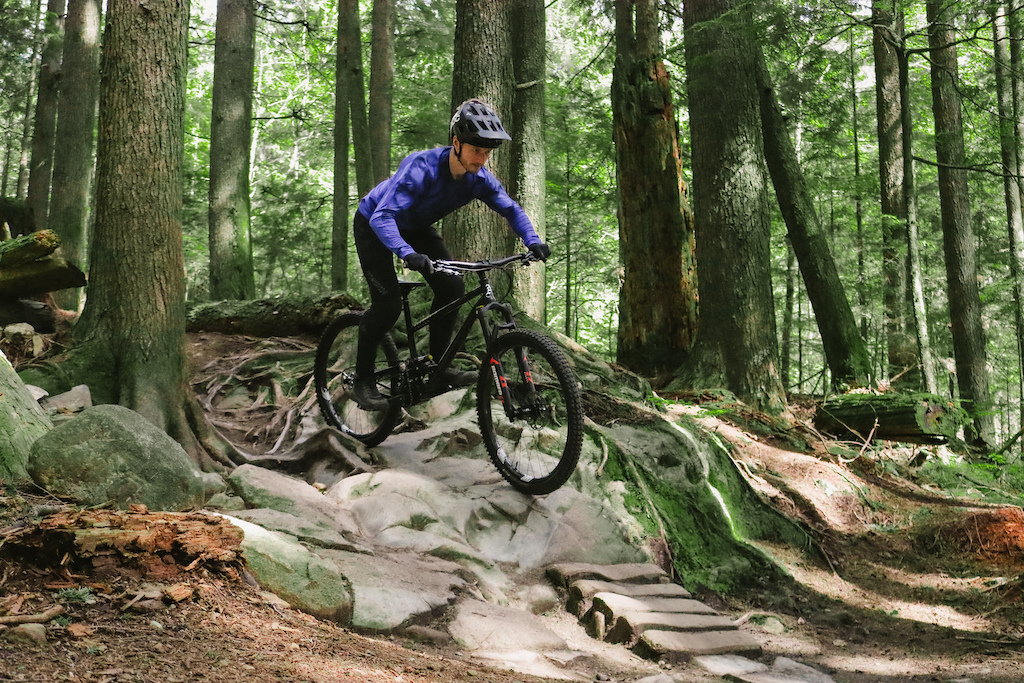
Ride Impressions
One day is hardly enough to study a bike, although I quickly became confident in the AC1’s ability to descend – this high pivot rig had no trouble eating up the janky old steps on the North Shore with its rearward axle path.
There’s less noise from the drivetrain as the chain is properly damped between the stays and there’s no ratcheting effect of a derailleur’s clutch sapping small bump compliance. If you’ve ever ridden a traditional drivetrain bike without a chain, then you’re familiar with that gliding feeling. That brought back memories of the last time I rode a gear box bike, although a belt does take that silence to another level.
Most high-pivot bikes are known for being on the sluggish side at lower speeds due to their growing chainstay length. The AC1s short 435mm chainstay and 27.5” rear wheel seem to pivot quickly through turns. The bike never felt nervous or wanted to understeer, but with more time I’d experiment with a spring firmer than the 400# we tried.
Alex did preface this and observantly caught on to my feedback. He mentioned how moving up a spring rate would barely change the sag but would stay further up the progressive curve and weight the front wheel a smidge more. This level of progression reminded me of the Crestline VHP205RS where the beginning of the travel moved with ease and ramped up heavily.

What about the steel chassis? Well, there’s elements of the steel Cotic RocketMax in there too. Those small tubes don’t act like a carbon drum machine. Instead they dull down the little chain or cable noises that occur.
In terms of flex, the AC1 was rolling on alloy wheels and there wasn’t a disconcerting amount of flex in the steel rear triangle, but that would be something to dive into deeper during a long term review. What’s most important though is that there were no carbon vibrations through the back end of the bike.
On the uphills, new techniques and learning are required for the Effigear gearbox, even compared to the Pinion on the Machina. The shifts seemed to be less consistent, and if they are mistimed when easing off of the pedal strokes you can become stuck in a gear until it decides to shift at will. Spending more time on this would likely cause the shifting to be less fickle, although I certainly appreciated the trigger shifter.
Based on the comments left by some of our readers, a high-pivot steel frame with a gearbox is the future. I’d be curious to bring a bike like this in for a longer term review against some of the other systems out there – maybe a gearbox bike shootout is in order.
